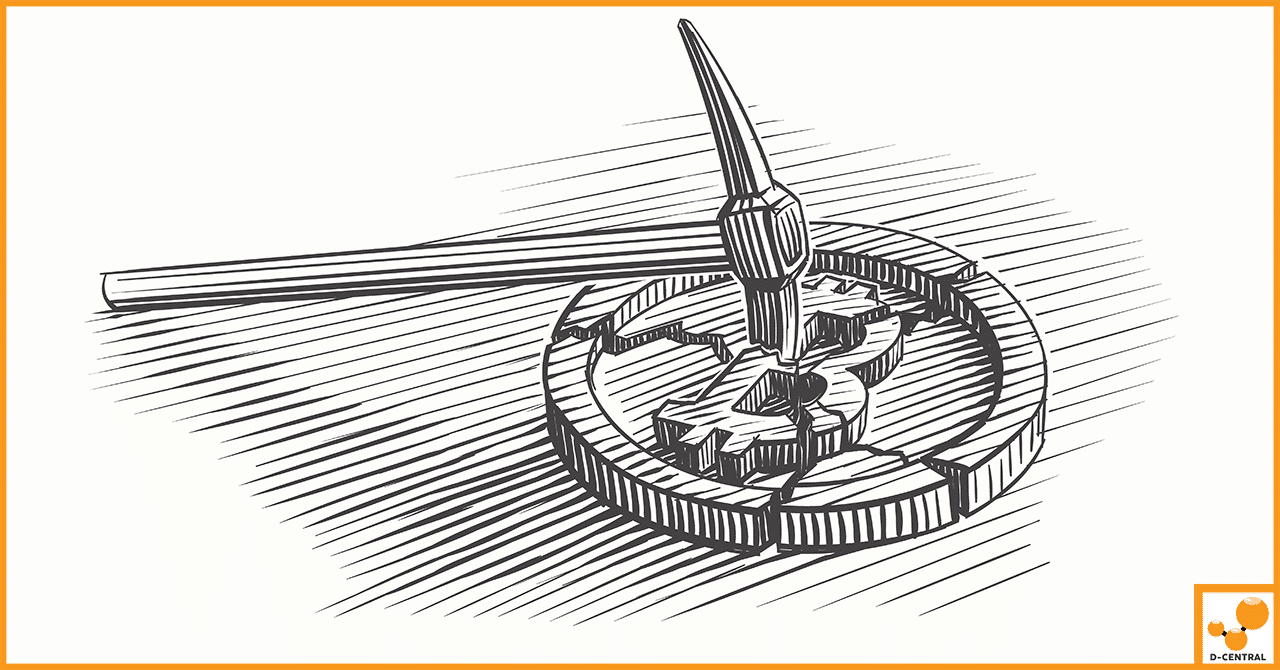
Ditch the Grid: How Clipped Solar is Changing the Bitcoin Mining Game Forever!
Bitcoin mining is an integral part of the Bitcoin network. It’s a decentralized process where individual miners use specialized hardware
4479 Desserte Nord Autoroute 440, Laval, QC H7P 6E2

ASICs, custom-built to perform the complex calculations required for Bitcoin mining, are the backbone of the industry. However, the supply chain for these critical components has not always been smooth. In 2020, the Bitcoin mining industry faced a significant bottleneck in the ASIC supply chain, causing widespread disruption and uncertainty.
The bottleneck was primarily due to a surge in global demand for ASICs, coupled with manufacturing constraints. This imbalance between supply and demand led to increased delivery times and prices, impacting the profitability of mining operations and causing a ripple effect on the Bitcoin network’s hash rate.
Understanding the state of the Bitcoin ASIC supply chain is crucial for anyone involved in Bitcoin mining. It provides insights into the availability and cost of mining hardware, which directly impacts mining profitability. Moreover, it sheds light on the broader dynamics of the Bitcoin mining industry, including competition, technological advancements, and market trends.
The year 2020 was a challenging one for the Bitcoin ASIC supply chain. The primary cause of the bottleneck was a surge in global demand for ASICs, driven by the rising value of Bitcoin and the growing interest in Bitcoin mining. This surge in demand coincided with manufacturing constraints, leading to a significant imbalance between supply and demand.
The impacts of the bottleneck were far-reaching. Delivery times for ASICs increased dramatically, and prices soared. This put a strain on Bitcoin miners, particularly those in North America, who found themselves at a disadvantage compared to their counterparts in China, where most ASIC manufacturers are based. The increased delivery times and prices directly impacted the profitability of mining operations, causing a ripple effect on the Bitcoin network’s hash rate.
As we navigate through 2023, the Bitcoin ASIC supply chain has seen significant changes and improvements since the bottleneck of 2020. The industry has adapted to the challenges and evolved in response to the shifting dynamics of the Bitcoin mining landscape.
The supply chain for Bitcoin ASICs has become more robust and resilient. Manufacturers have ramped up production capacities to meet the increasing demand for ASICs. Technological advancements have led to the production of more efficient and powerful ASICs, enhancing the profitability of Bitcoin mining.
The top three most prominent Bitcoin mining rig producers continue to dominate the market. The Bitmain Antminer S19 XP Hydro is currently the top Bitcoin mining rig, boasting a hashrate of 255 terahash per second (TH/s).
One of the key changes since 2020 is the entry of Intel into the Bitcoin ASIC production. Intel has announced its first-gen and second-gen Bonanza Mine chips, which are expected to rival the best mining ASICs on the market. This development is set to stir the market and potentially reshape the ASIC supply chain.
Moreover, the industry has seen a shift towards more sustainable and energy-efficient mining solutions.
Despite these improvements, the Bitcoin ASIC supply chain continues to face challenges. The global chip shortage, which affects hundreds of industries worldwide, looms over the Bitcoin mining industry, making semiconductors hard to obtain.
However, the industry is taking proactive measures to address this challenge. For instance, GRIID, a publicly-listed Bitcoin miner, has signed a purchase agreement with Intel for acquiring fixed-price Bitcoin mining ASIC hardware for orders placed before May 2023. This move is aimed at securing access to Intel’s new chip and mitigating the impact of the global chip shortage.
The journey of the Bitcoin ASIC supply chain from the bottleneck of 2020 to the progress witnessed in 2023 is a testament to the resilience and innovation inherent in the Bitcoin mining industry. As we look to the future, the evolution of the Bitcoin ASIC supply chain is set to continue, driven by technological advancements, market dynamics, and the ever-growing interest in Bitcoin mining.
The Bitcoin ASIC manufacturing landscape has seen significant changes and advancements since 2020. The industry has evolved in response to the shifting dynamics of the Bitcoin mining landscape, with new players entering the market and existing ones making strides in ASIC technology.
The technology behind Bitcoin ASICs has made significant strides since 2020. The most notable advancement is the development of 3nm ASIC technology, which offers higher transistor density, better mining speed, and reduced power consumption. This technological leap has led to the production of more efficient and powerful ASICs, enhancing the profitability of Bitcoin mining.
A few key players dominate the Bitcoin ASIC manufacturing sector, with Bitmain, MicroBT, and Canaan leading the pack. Bitmain, in particular, has cemented its presence in the industry, manufacturing 10 out of today’s top 18 ASIC miners.
These manufacturers have made significant contributions to the industry, not only in terms of the production of ASICs but also in the development of more efficient and powerful mining rigs. Their ongoing research and development efforts are driving the advancements in ASIC technology and shaping the future of the Bitcoin mining landscape.
Intel’s exit from Bitcoin ASIC production in 2023, just a year after the introduction of its Blockscale ASIC series, was a significant event in the industry5. Intel’s Blockscale ASICs were touted for their high performance and energy efficiency, and their discontinuation has left a gap in the market.
However, the impact of Intel’s exit is yet to be fully realized. The Bitcoin ASIC manufacturing sector is highly competitive, and other manufacturers may seize this opportunity to fill the gap left by Intel. The industry’s resilience and adaptability, as demonstrated during the 2020 bottleneck, suggest that it is well-equipped to navigate this change and continue to evolve.
The Bitcoin ASIC manufacturing market is dynamic and ever-evolving, shaped by technological advancements, market dynamics, and the strategic moves of key players. Understanding the current market trends and predictions can provide valuable insights into the future trajectory of the industry.
The Bitcoin ASIC manufacturing sector is dominated by a few key players, with Bitmain, MicroBT, and Canaan leading the pack. Bitmain, in particular, has cemented its presence in the industry, manufacturing 10 out of today’s top 18 ASIC miners. These manufacturers hold a significant share of the market, shaping the industry landscape with their innovative products and strategic moves.
Several emerging trends are set to shape the future of the Bitcoin ASIC manufacturing industry. One such trend is the development of 3nm ASIC technology, which offers higher transistor density, better mining speed, and reduced power consumption. This technological leap is set to enhance the efficiency and profitability of Bitcoin mining, driving the demand for advanced ASICs.
The journey of the Bitcoin ASIC supply chain from the bottleneck of 2020 to the progress witnessed in 2023 is a testament to the resilience and innovation inherent in the Bitcoin mining industry. Over the past three years, the industry has navigated through significant challenges, adapted to changing market dynamics, and embraced technological advancements.
The Bitcoin ASIC supply chain has evolved from a state of bottleneck to a more robust and resilient system. Manufacturers have ramped up production capacities, developed more efficient and powerful ASICs, and made strategic moves to secure their market positions. The entry and exit of key players, such as Intel, have stirred the market, leading to shifts in the industry landscape.
Looking ahead, the Bitcoin ASIC supply chain is set to continue its evolution. Emerging trends, such as the development of 3nm ASIC technology and the increasing focus on sustainability, are expected to shape the future of the industry. The ongoing advancements in ASIC technology, coupled with the rising popularity of Bitcoin mining, suggest a promising future for the Bitcoin ASIC supply chain.
At D-Central Technologies Inc, we are committed to supporting your Bitcoin mining needs in this evolving landscape. We offer a range of services, including consultation, sourcing of mining hardware, hosting mining operations, ASIC repairs, maintenance training, and comprehensive mining support and outsourcing solutions. Whether you are a DIY miner or looking for a trusted partner to manage your mining operations, we have the expertise and resources to help you navigate the Bitcoin ASIC supply chain and maximize your mining profitability.
What was the Bitcoin ASIC supply chain bottleneck in 2020?
The Bitcoin ASIC supply chain faced a significant bottleneck in 2020. This was primarily due to a surge in global demand for ASICs, along with manufacturing constraints. This led to increased delivery times and prices, impacting mining profitability and the Bitcoin network’s hash rate.
How has the Bitcoin ASIC supply chain improved since 2020?
Since the bottleneck of 2020, the Bitcoin ASIC supply chain has seen significant improvements. Manufacturers have increased production capacities, and advancements in technology have led to more efficient and powerful ASICs. Notable changes include the entry of Intel into Bitcoin ASIC production and a shift towards more sustainable mining solutions.
Who are the key players in the Bitcoin ASIC manufacturing sector?
Bitmain, MicroBT, and Canaan are key players dominating the Bitcoin ASIC manufacturing sector. These manufacturers contribute significantly to the ASIC production, the development of powerful mining rigs, and ongoing advancements in ASIC technology.
What impact did Intel’s exit from Bitcoin ASIC production have on the industry?
Intel’s exit in 2023, a year after introducing the Blockscale ASIC series, was a significant event. The impact of Intel’s exit is yet to be fully realized. However, it’s likely other manufacturers will seize this opportunity to fill the market gap.
What are the current trends in the Bitcoin ASIC manufacturing industry?
Emerging trends in the Bitcoin ASIC manufacturing industry include the development of 3nm ASIC technology, which offers higher transistor density, improved mining speed, and reduced power consumption. This advancement is set to enhance the efficiency and profitability of Bitcoin mining, driving demand for advanced ASICs.
What services does D-Central Technologies Inc offer for Bitcoin mining?
D-Central Technologies Inc offers a range of services tailored to the needs of Bitcoin miners. These include consultation, sourcing of mining hardware, hosting mining operations, ASIC repairs, maintenance training, and comprehensive mining support and outsourcing solutions.
DISCLAIMER: D-Central Technologies and its associated content, including this blog, do not serve as financial advisors or official investment advisors. The insights and opinions shared here or by any guests featured in our content are provided purely for informational and educational purposes. Such communications should not be interpreted as financial, investment, legal, tax, or any form of specific advice. We are committed to advancing the knowledge and understanding of Bitcoin and its potential impact on society. However, we urge our community to proceed with caution and informed judgment in all related endeavors.
Related Posts

Bitcoin mining is an integral part of the Bitcoin network. It’s a decentralized process where individual miners use specialized hardware

In the world of digital currencies, Bitcoin has always stood out as the pioneer of decentralization. Since its inception in

As winter approaches, the quest for efficient heating solutions becomes crucial, especially for cryptocurrency enthusiasts. D-Central’s innovative crypto mining space